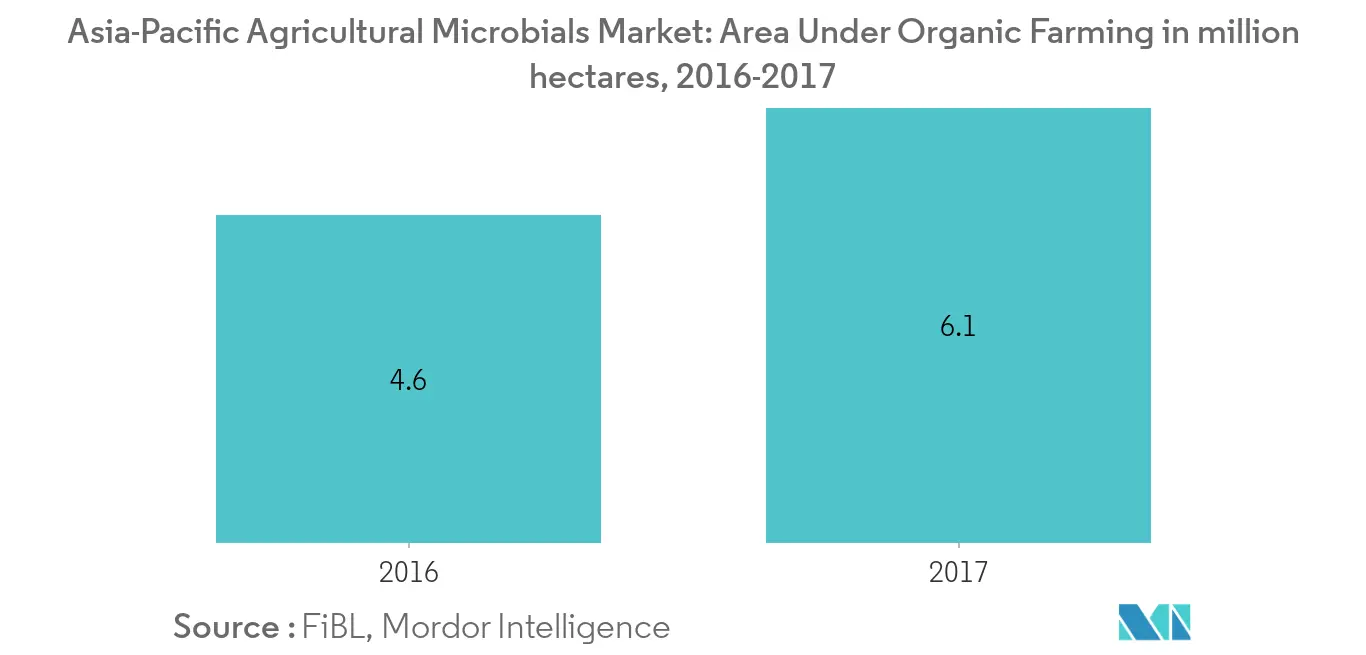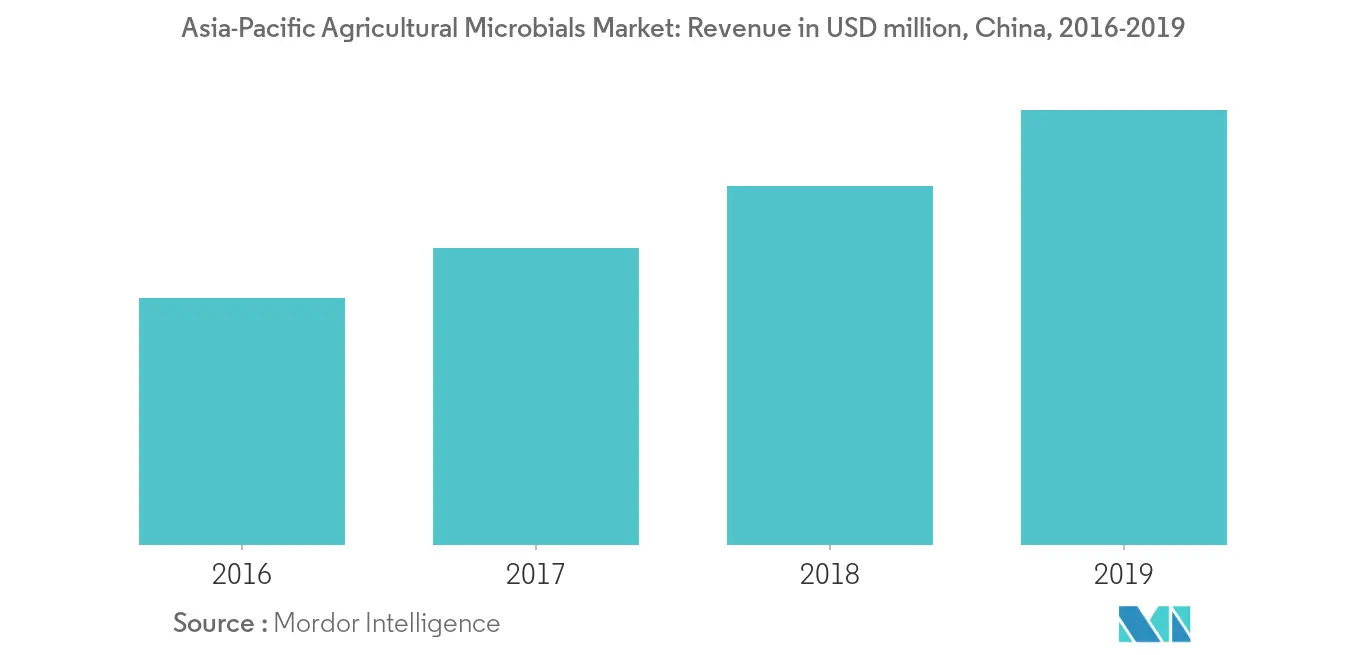Market Trends of Asia-Pacific Agricultural Microbial Industry
This section covers the major market trends shaping the APAC Agricultural Microbial Market according to our research experts:
Popularity of Organic Farming
Organic farming represents a unique and fast-growing segment of the food industry in the Asia-Pacific region. Being less harmful than synthetic pesticides, microbial pesticides typically affect only the target pest and other organisms closely related to it, as against broad-spectrum conventional pesticides, which can be harmful to other organisms, such as birds, insects, and mammals. As of 2017, the area of organic agricultural land in Asia-Pacific was at 6.1 million hectares, which is 0.4 % of the total agricultural area in the region. Between 2016 and 2017, the organic area in Asia increased by over 1.2 million hectares or 25 percent. The country with the largest organic agricultural area in China (3 million hectares) and the country with the most producers are India (having 835,000 producers). Additionally, the emerging resistance in insects is driving interest in biological alternatives. As conventional synthetic options become ineffective due to developing resistance, growers are more and more willing to try biological options. Microbial pesticides can be very effective even in small quantities and decompose quickly, which causes lower exposure levels and prevents pollution-associated problems of traditional pesticides. Consumers have become more aware of the products they consume and scrutinize the safety and quality of food products. So, when farmers use microbial pesticides in agricultural lands, they lessen the chances of toxicity that comes figuratively from synthetic pesticide usages. Innovations in the area of microbial pesticides, coupled with a growing consumer awareness about the negative impact of synthetic pesticides, are projected to increase future adoption rates for these products.

China Leads the Market in the Region
The Chinese market for agricultural microbial was valued at USD 313.3 million in 2018, and it is projected to register a robust CAGR during the forecast period. Bacteria-based microbial held the largest share of 50.0% of the market in 2018. Virus-based microbial products held the second-largest market share with 32.1%, followed by fungi with 15.5% and other microbials with 2.4%. In 2017, the Chinese Ministry of Agriculture was likely to propagate the industry standard for agricultural microbial concentrate. In the intervening time, on-going research, and product registration of soil remediation microbial agent has been in full progress. In 2016, the Chinese Ministry of Agriculture approved around 500 microbial agent registrations and over 470 temporary registrations. There are over 800 microbial fertilizer enterprises in China producing 9 million metric tons annually, with export of 200,000 to 3000,000 metric ton. As per China's 2020 fertilizer and pesticide use zero growth plan, microbial products are projected to become highly demanded products, which implies great potential for growth with wide future prospects.


